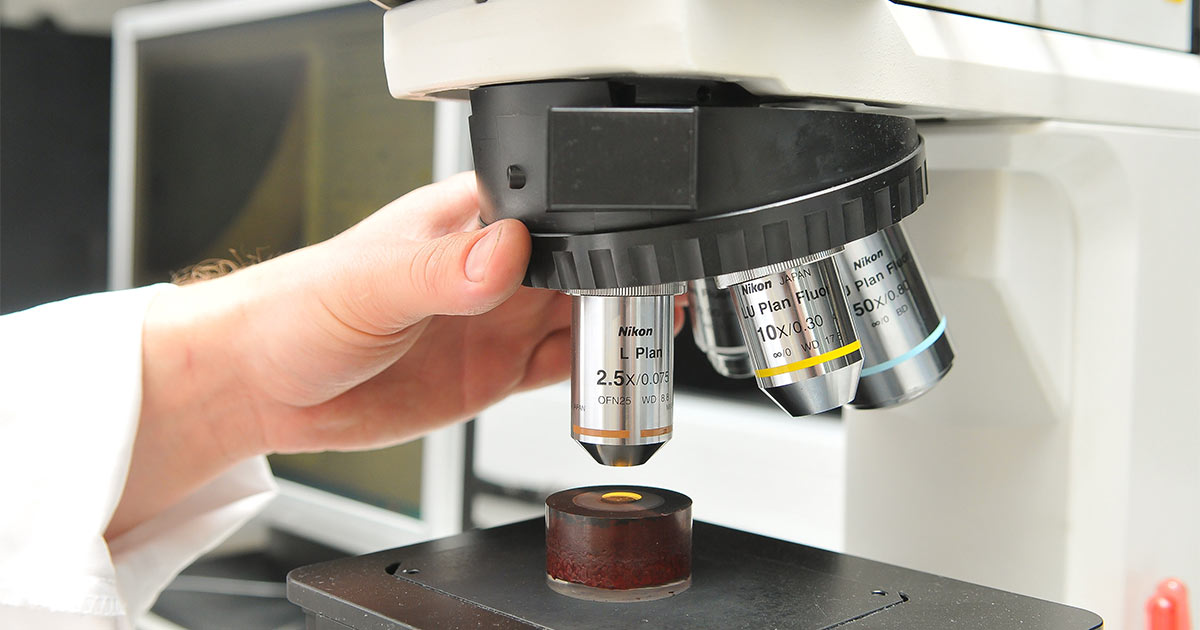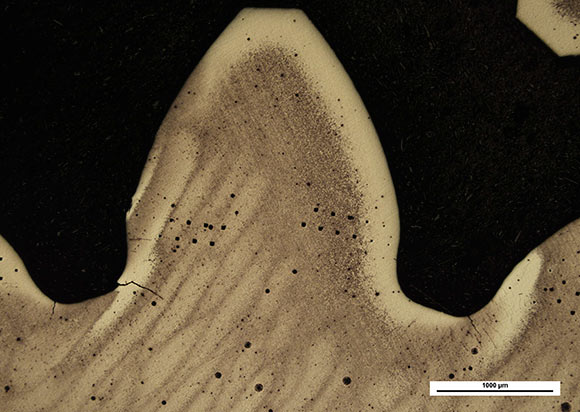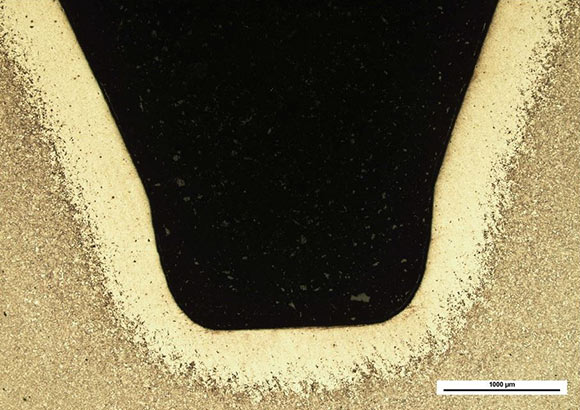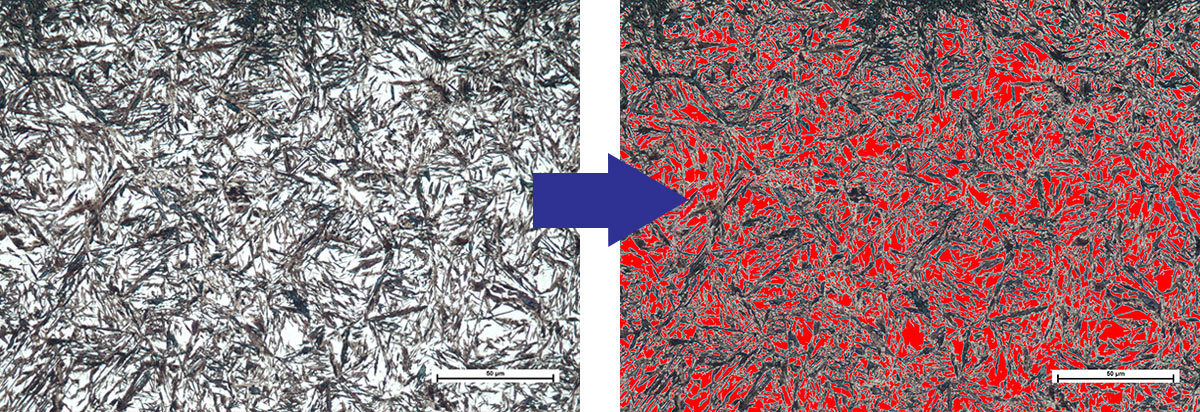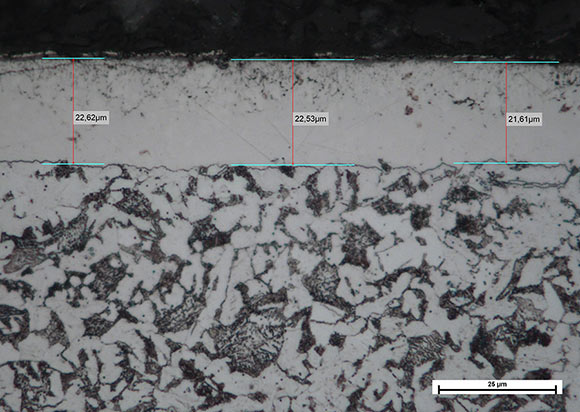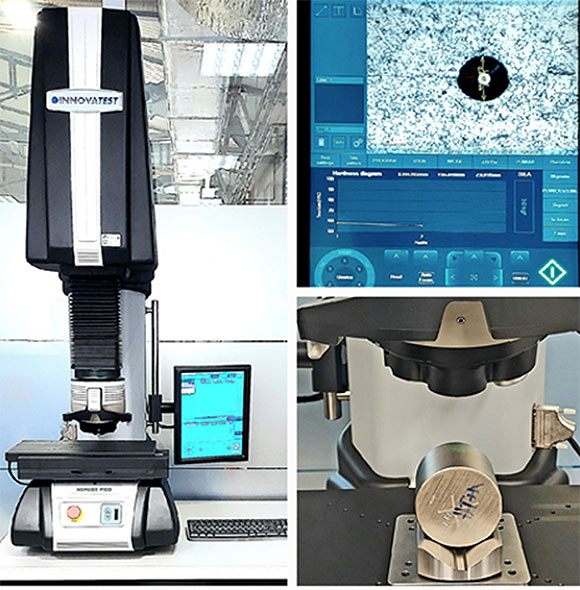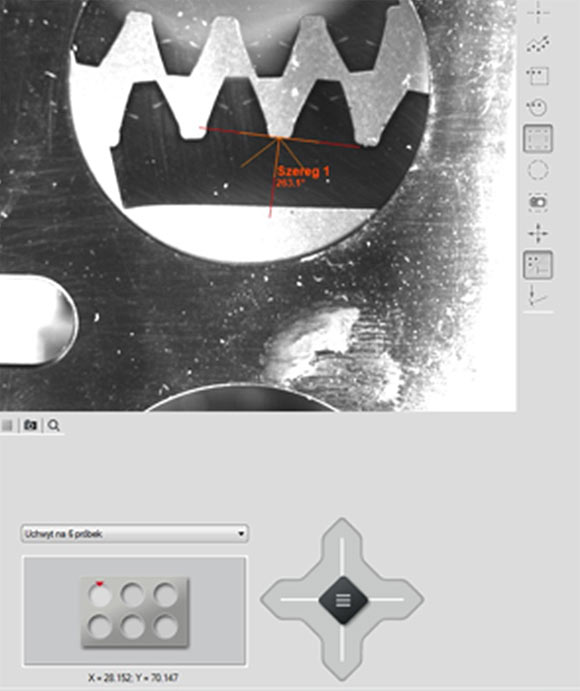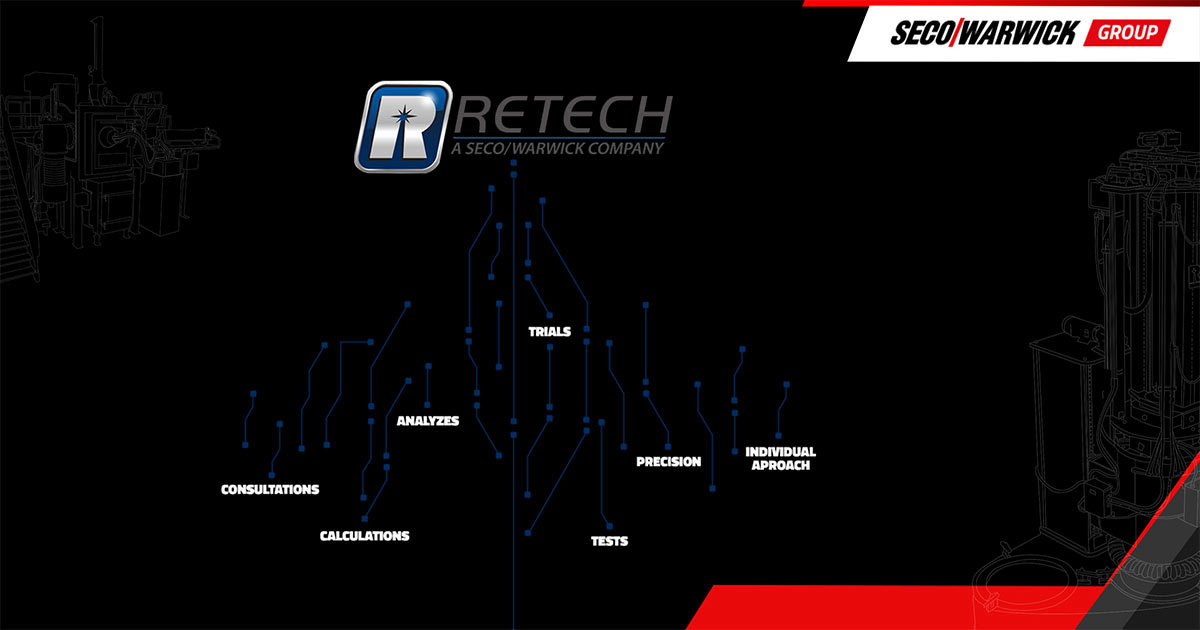Metals under the microscope, or what are metallographic tests?
These are a comprehensive set of laboratory techniques aimed at analyzing the metals and alloys microstructure. They allow for the assessment of the material’s mechanical, physical and chemical properties, as well as the identification of the possible damage or defects causes. To put it simply, these tests reveal to us what is hidden inside the metal object.
How does it work? What to do to look inside the detail?
- Preparation of a metallographic microsection:
- a small piece is taken from the metal detail, using a precise metallographic cutter,
- embedding the sample in resin (inclusion) – metallographic microsection creation,
- grinding and polishing: the surface of this piece is ground and polished until it becomes perfectly smooth,
- etching – immersion in a special chemical solution (etching reagents). This solution reacts unevenly with some elements of the metal structure. Places which are more chemically active react faster, thus creating contrast.
- Microscopic observation: the prepared sample is placed under a light microscope, which allows to see the metal internal structure at high magnification.
Microstructure Revealing – What for?
- Defect Detection: identification of various types of defects, such as cracks, porosity, non-metallic inclusions, segregation of components, decarburization or abnormal grain growth caused by the processed part overheating.
Microcracks and segregation
- The treatment influence assessment: analysis of microstructure changes caused by heat treatment, thermochemical treatment, mechanical treatment or other technological processes.
Correctly carburized gear wheel’s tooth slot
- Determination of phase composition: individual phases’ identification and their share in the microstructure measurement (e.g. ferrite, retained austenite, pearlite).
The retained austenite content in the carburized layer assessment.
In this case, as much as 32.2%
- The grain size and shape analysis: assessment of the average grain size, their orientation and distribution.
- Layer thickness measurement
The thickness measurement of white layer created as a result of the nitriding process
- And many, many more…
Hardness measurements – modern equipment, experienced staff – a guarantee of reliable results
What are hardness measurements?
It is a set of research methods which allow determining the resistance of a material to permanent plastic deformations caused by the penetration of a special indenter into its surface.
How is it done?
- Pressing: a very hard indenter is pressed into the object.
- A small imprint is created.
- Measurement: the size and shape of this imprint are measured.
- Result: the material hardness is calculated based on these measurements.
INNOWATEST Nemesis 9101 hardness tester – the latest acquisition at SECO/LAB
Why do we measure hardness?
Hardness is one of the most important properties of metals and alloys, and has a direct impact on their:
- scratch resistance: hard materials are less susceptible to mechanical damage,
- relationship with strength: hardness often correlates with the material’s tensile strength,
- resistance to indentation: hardness affects the material’s resistance to plastic deformation,
- abrasion resistance: the harder the material, the slower it wears off.
What methods are available in the SECO/LAB metallographic laboratory and what are they used for?
- Brinell method: soft and medium-hard metals, castings, non-homogeneous materials.
- Vickers method: a wide range of materials, from very soft to very hard, thin layers. Chemical thermo-treatment – the carburized and nitrided layers’ thickness measurement.
- Rockwell method: mainly steels after quenching and heat treatment, i.e. very hard.
- Knoop method: very thin layers, small samples, materials with low hardness.
View of the EcosWorkFlow interface, controlling the Stuers DuraScan microhardness tester. The macro camera and lenses enable very precise positioning of hardness tracks and individual imprints.
To sum up, our laboratory offers precise hardness measurements and detailed microstructure analysis using a light microscope. This allows to identify potential defects, assess material quality and make conscious decisions about production.
